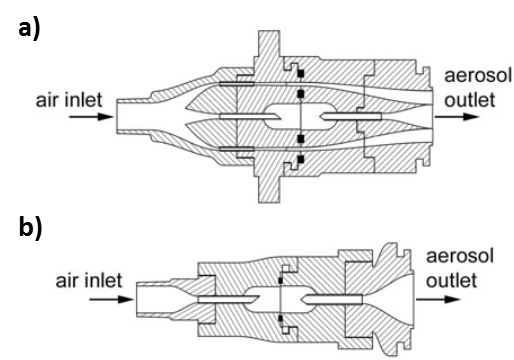Pharmaceutical Aerosols
Positive pressure inline dry powder inhalers
High efficiency aerosol delivery for infants & children
Current methods of delivering pharmaceutical aerosols to infants and children are known to have a number of issues, including poor lung delivery efficiency, high dose variability, and long administration times. One potential approach to improve the delivery of aerosols to infants and children is to use inline dry powder inhalers (DPIs), which are capable of rapidly delivering relatively high powder masses of a variety of medications. Unlike typical inhalation-driven inhalers, inline DPIs are actuated by an external gas source, such as a ventilation bag, air-filled syringe, or compressed air, which enables the actuation air volume and flow rate to be readily controlled and reproduced with little variability. This is in contrast to current DPIs which require at least 1600 mL of air for operation, while infants and children can only inhale ~10 mL and 500 mL, respectively.
The technology
Our researchers have developed DPIs that are designed for children and infants, which use a positive pressure system to supply a complete and appropriately measured inhalation. These devices can operate with as little as 5-10 mL of air and can efficiently empty (emitted doses >80%) and deliver the aerosol to the lungs (lung delivery efficiency of ~60% of the loaded dose). These DPIs can be used to deliver a variety of dry powder medications and also have the ability to be used in combination with different various forms of invasive and non-invasive ventilation interfaces, such as breathing masks, nasal prongs, and endotracheal tubes.
Figure 1. (a) and (b) depict axial cross-sectional views of the pediatric inline DPIs with different airflow pathways.
